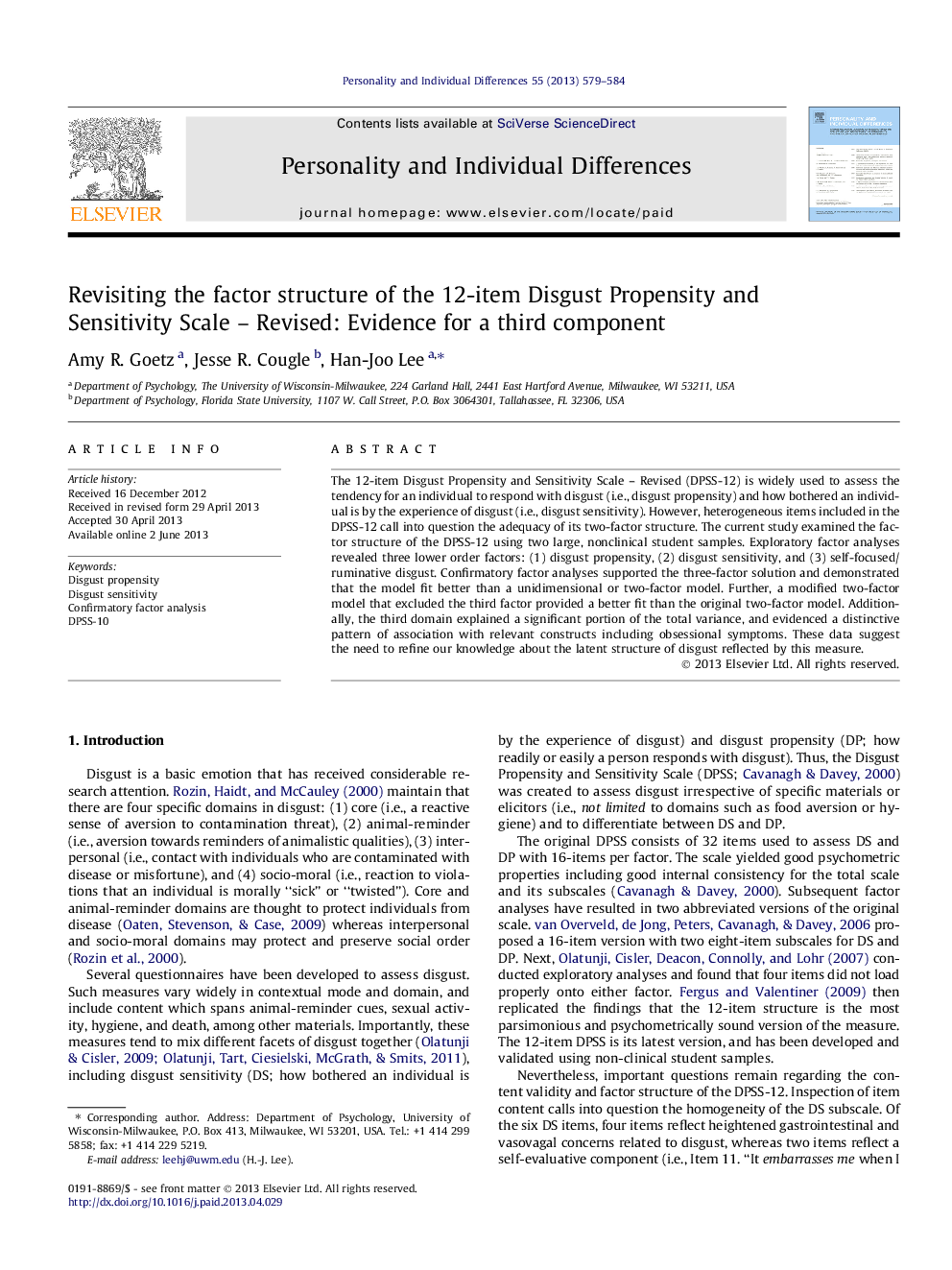| Article ID | Journal | Published Year | Pages | File Type |
|---|---|---|---|---|
| 890613 | Personality and Individual Differences | 2013 | 6 Pages |
•The factor structure of the DPSS-12 was examined in two large, nonclinical samples.•Exploratory factor analysis found evidence for a three-factor structure.•Confirmatory factor analysis supported the three-factor solution.
The 12-item Disgust Propensity and Sensitivity Scale – Revised (DPSS-12) is widely used to assess the tendency for an individual to respond with disgust (i.e., disgust propensity) and how bothered an individual is by the experience of disgust (i.e., disgust sensitivity). However, heterogeneous items included in the DPSS-12 call into question the adequacy of its two-factor structure. The current study examined the factor structure of the DPSS-12 using two large, nonclinical student samples. Exploratory factor analyses revealed three lower order factors: (1) disgust propensity, (2) disgust sensitivity, and (3) self-focused/ruminative disgust. Confirmatory factor analyses supported the three-factor solution and demonstrated that the model fit better than a unidimensional or two-factor model. Further, a modified two-factor model that excluded the third factor provided a better fit than the original two-factor model. Additionally, the third domain explained a significant portion of the total variance, and evidenced a distinctive pattern of association with relevant constructs including obsessional symptoms. These data suggest the need to refine our knowledge about the latent structure of disgust reflected by this measure.
